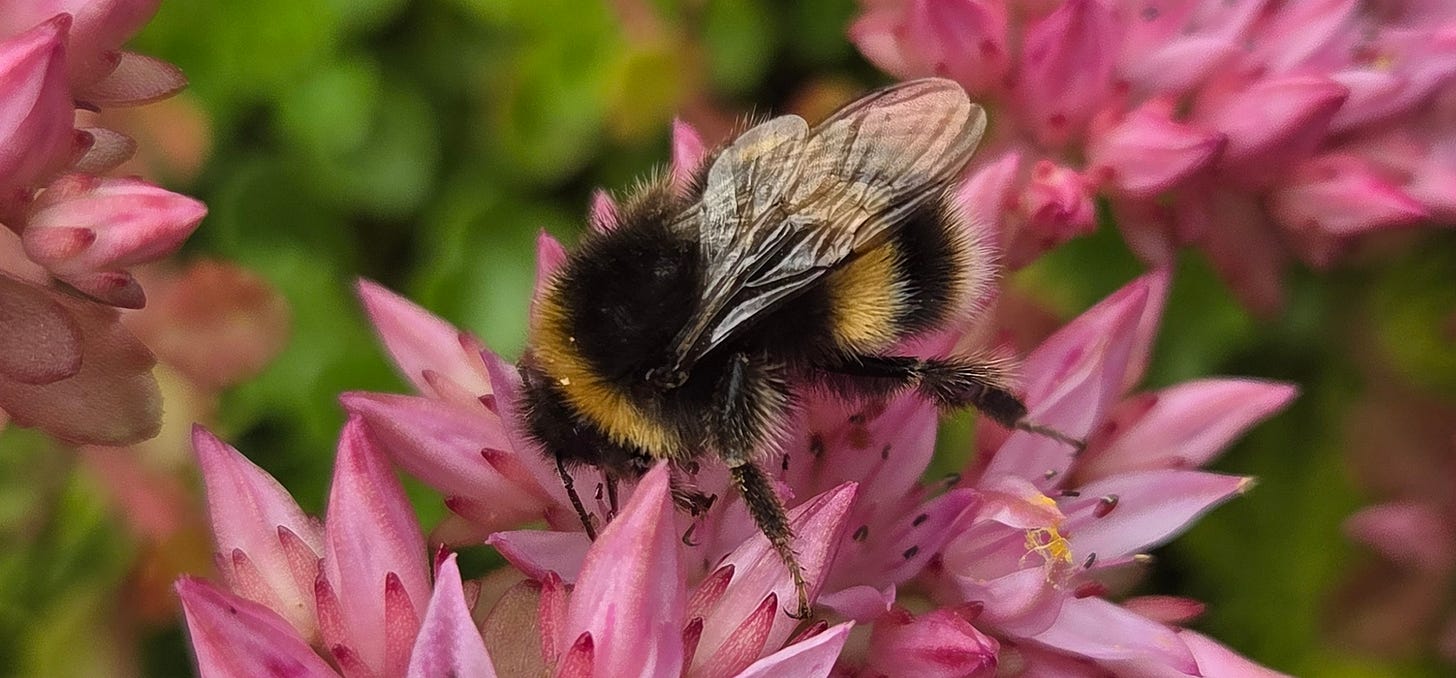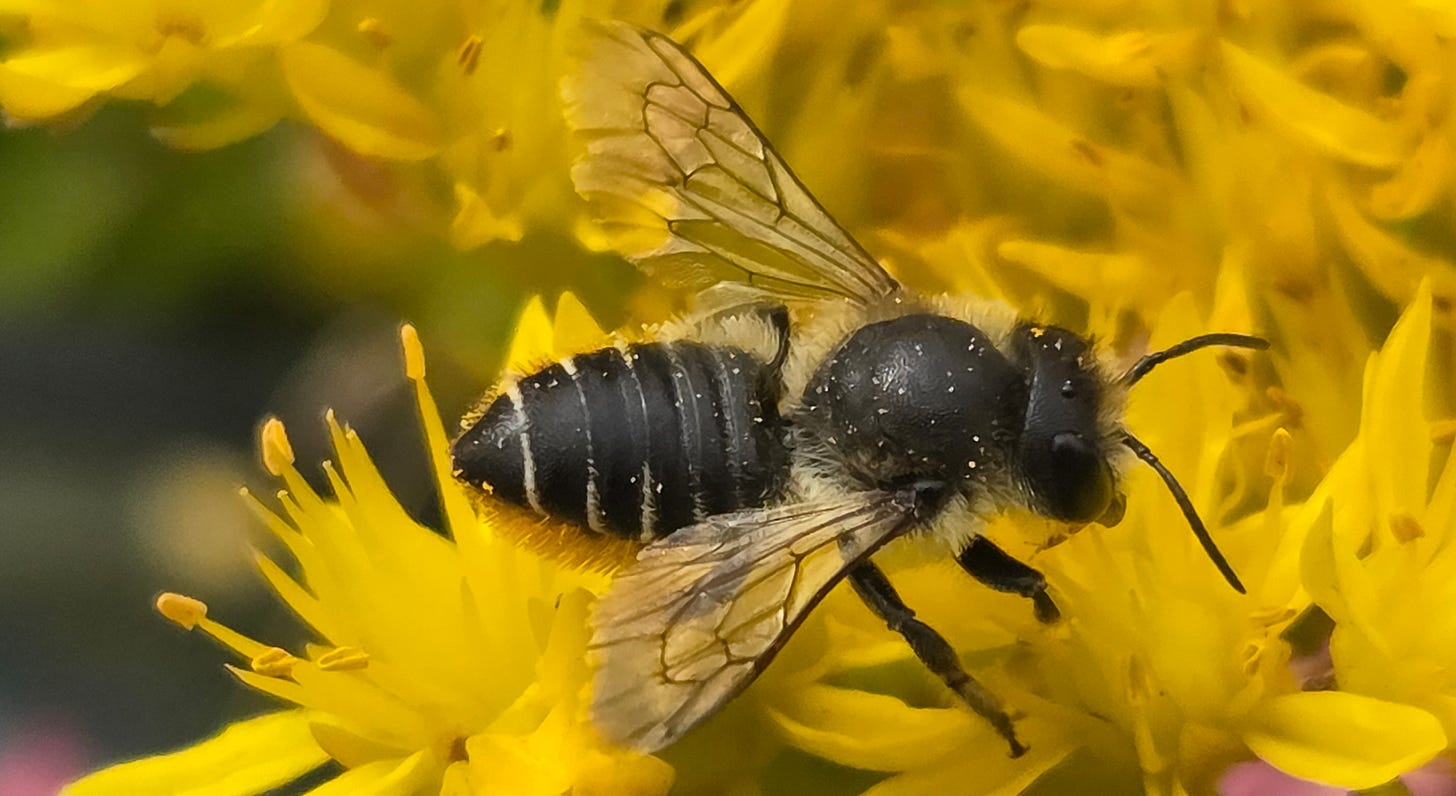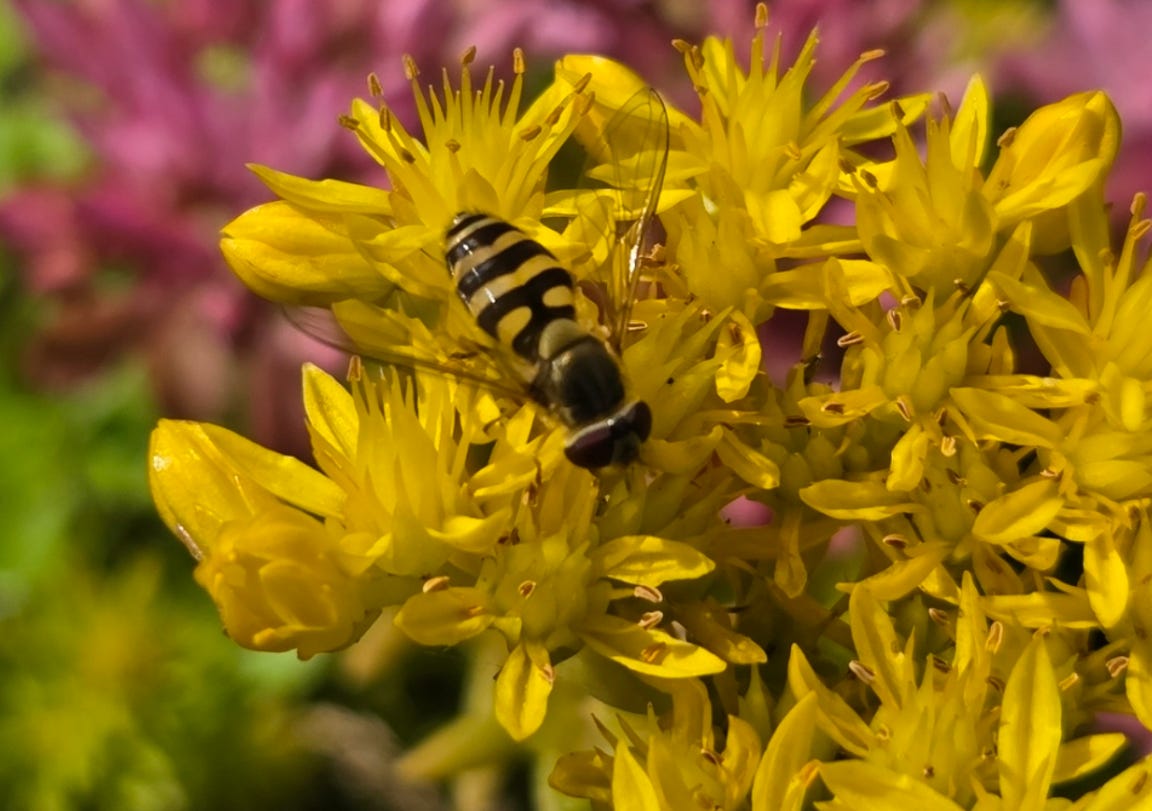I have two different types of an evergreen succulent plant called stonecrop growing over a 3-foot stone wall in my yard: Reflexed stonecrop, aka Prick-madam or Petrosedum rupestre, and Creeping stonecrop, aka Two-row stonecrop or Phedimus spurius. It’s been there for many years, for as long as I can remember.
In the pic below, taken at the start of July 2025, the yellow and pink flowers in the centre right are some of the stonecrop (you can see some of my solar lights to the right of the stonecrop). The yellow flowers are Petrosedum rupestre, and the pink ones are Phedimus spurius.
A pic from 24 June:
This pic was taken in the autumn of 2023, when the stonecrop wasn’t flowering. You can see the stone wall better in this pic, too.
I really, properly noticed for the first time this summer that both kinds of stonecrop are an absolute magnet for pollinators of all kinds. Every time I set foot outside, there are hoverflies galore, bumblebees, honeybees, solitary bees and butterflies feeding on it. The pics below were taken at the end of June and start of July 2025.
Below, a honeybee on the stonecrop.
Below, a buff-tailed bumblebee on the stonecrop.
Below, a patchwork leafcutter bee.
Below, a comma butterfly.
Below, a tree bumblebee.
Below, a red-tailed bumblebee.
Below, a hoverfly with gorgeous wasp-mimicking patterns.
Below, a white-tailed bumble and a buff-tailed bumble.
Below, a tawny mining bee on the stonecrop last summer, 15 July 2024.
Below, a buff-tailed bumblebee* exploring the stonecrop and the wall behind for potential nesting sites, 22 March 2025.
*I think, as she was a big bumble, though her tail is very orange, more like that of an early bumblebee.
As well as the sheer number of pollinators feeding on the stonecrop, I’m amazed and thrilled at the diversity of them. On 3 July, I saw no fewer than seven types of bumblebee on it: buff-tailed, white-tailed, red-tailed, early, tree, garden, and common carder. Then there are the solitary bees, such as mining bees and leafcutter bees, a large number of hoverflies, most of which I can’t even identify, and butterflies as well. Oh, and a couple of summers ago, I squeaked out loud with surprise when I saw a little frog in a patch of the stonecrop that extends from the wall into a gravelled area of my yard. It’s been an absolute delight to see so many wonderful creatures using the stonecrop, and I’m so glad it’s there.

















A beautiful photo essay Kate, reminding us of the importance of growing native plants to feed the pollinators. I just wrote a note about that as relates to hummingbirds:
https://substack.com/@bairdbrightman/note/c-132133981?r=2ks6k8&utm_medium=ios&utm_source=notes-share-action
I have lots of yellow stonecrop growing in the courtyard on a layer of stones, it's blooming now and so pretty.